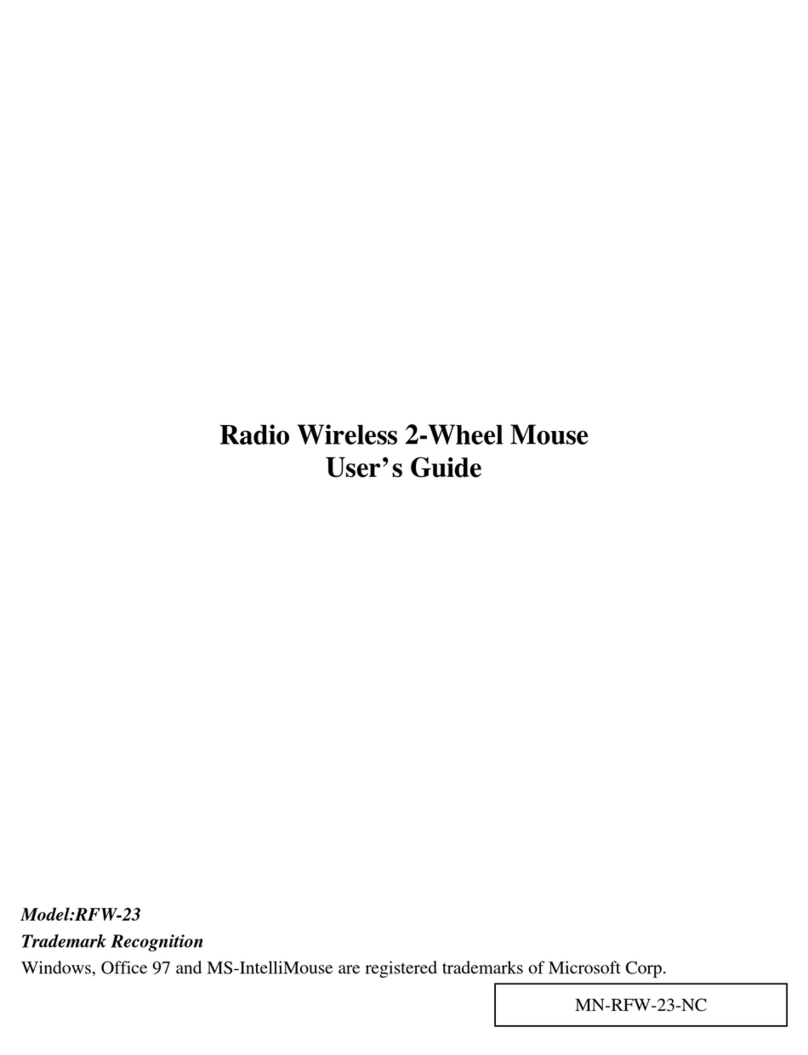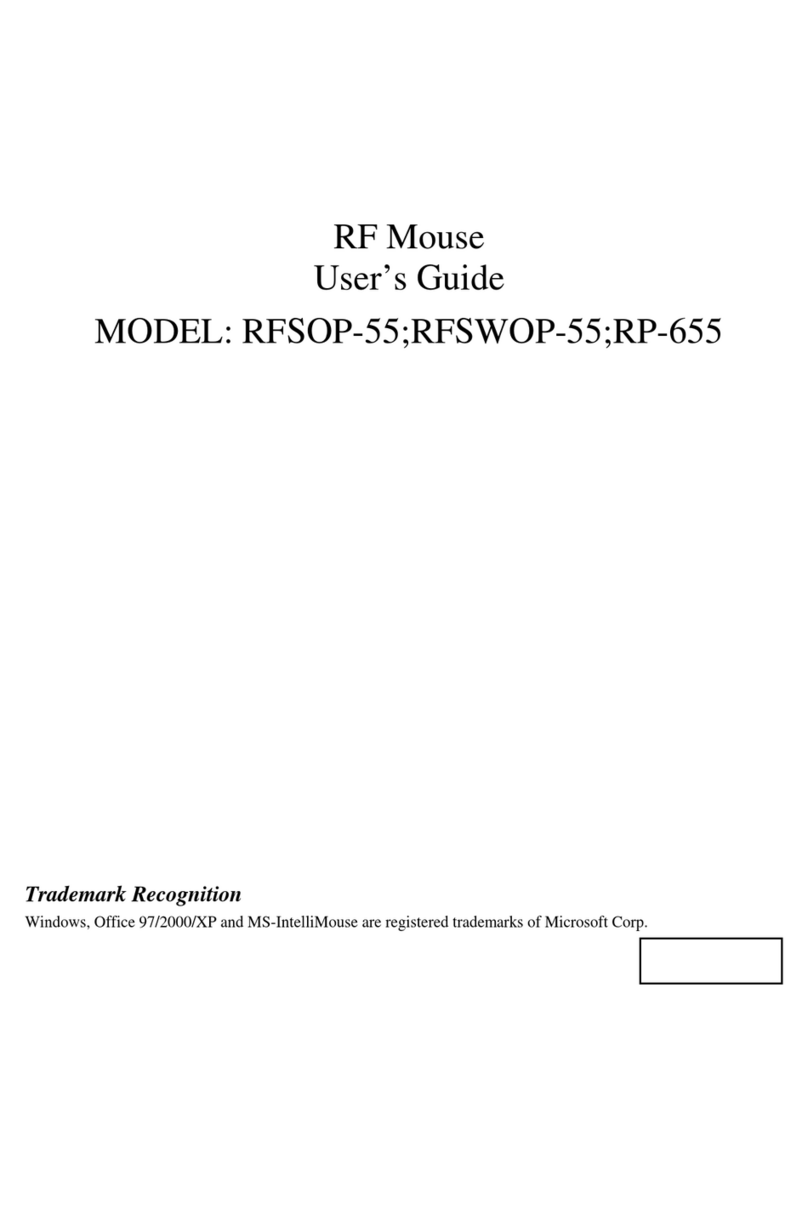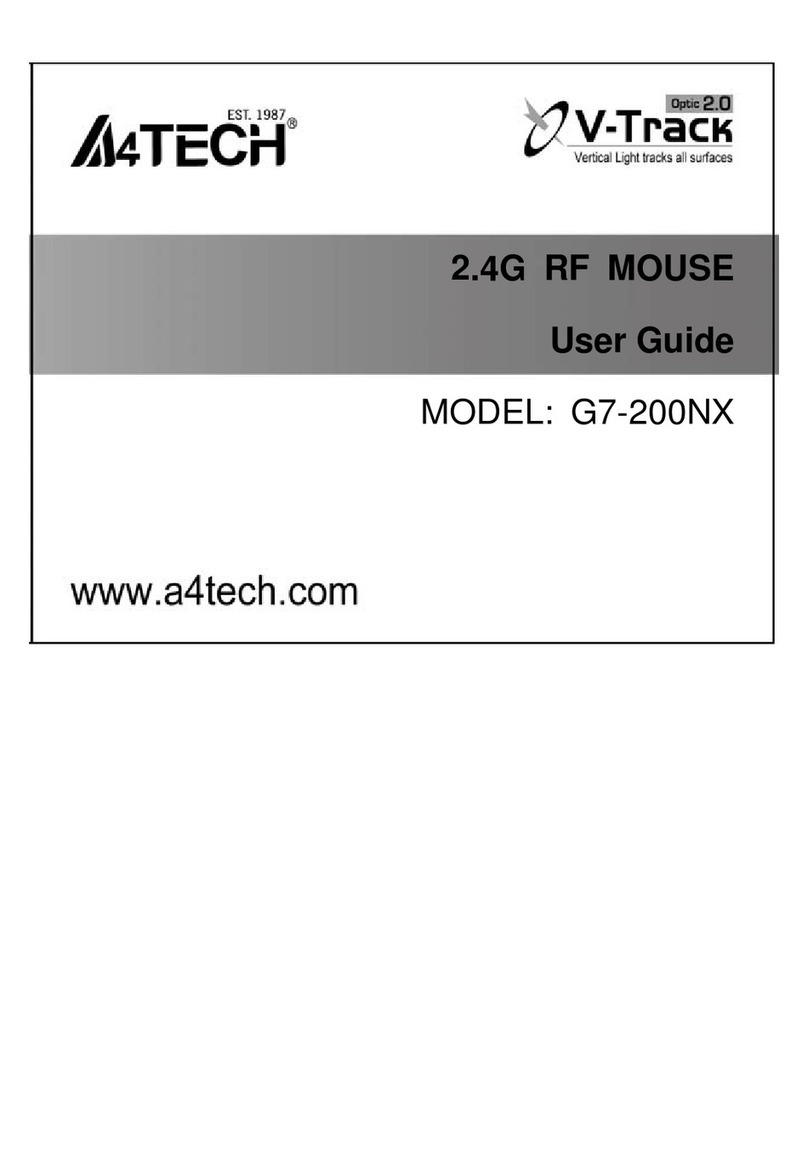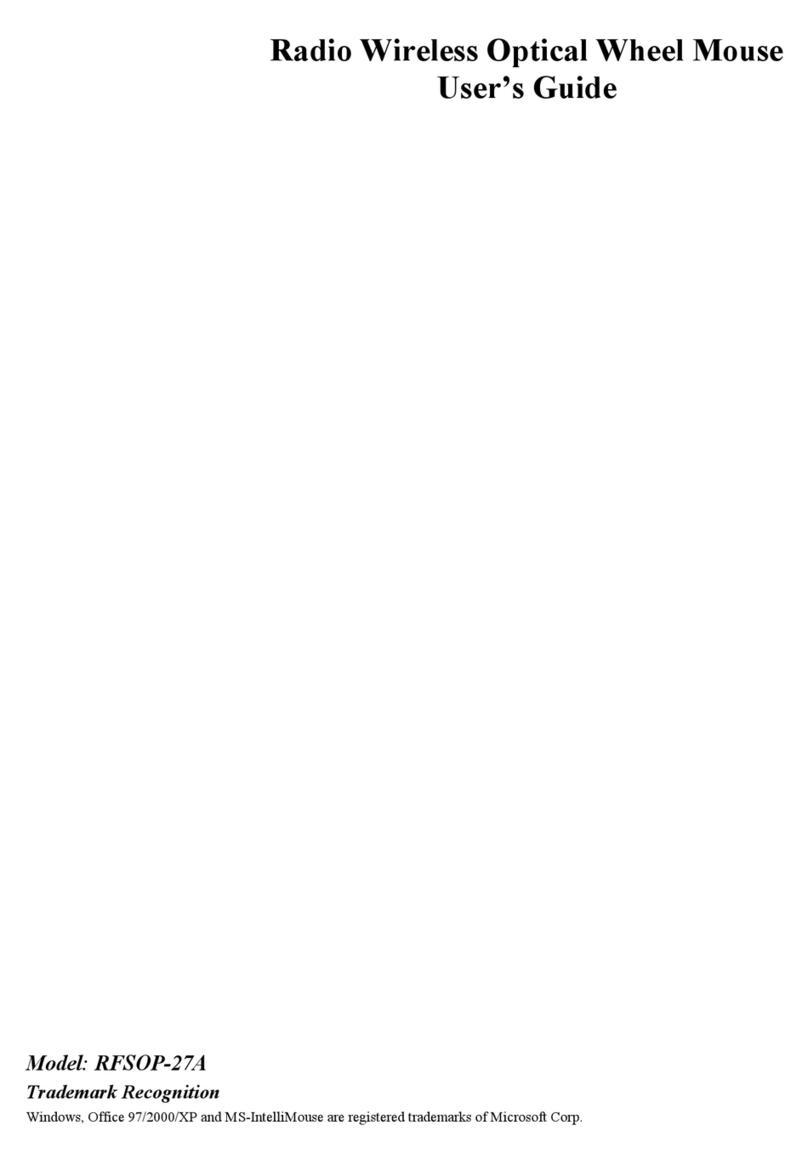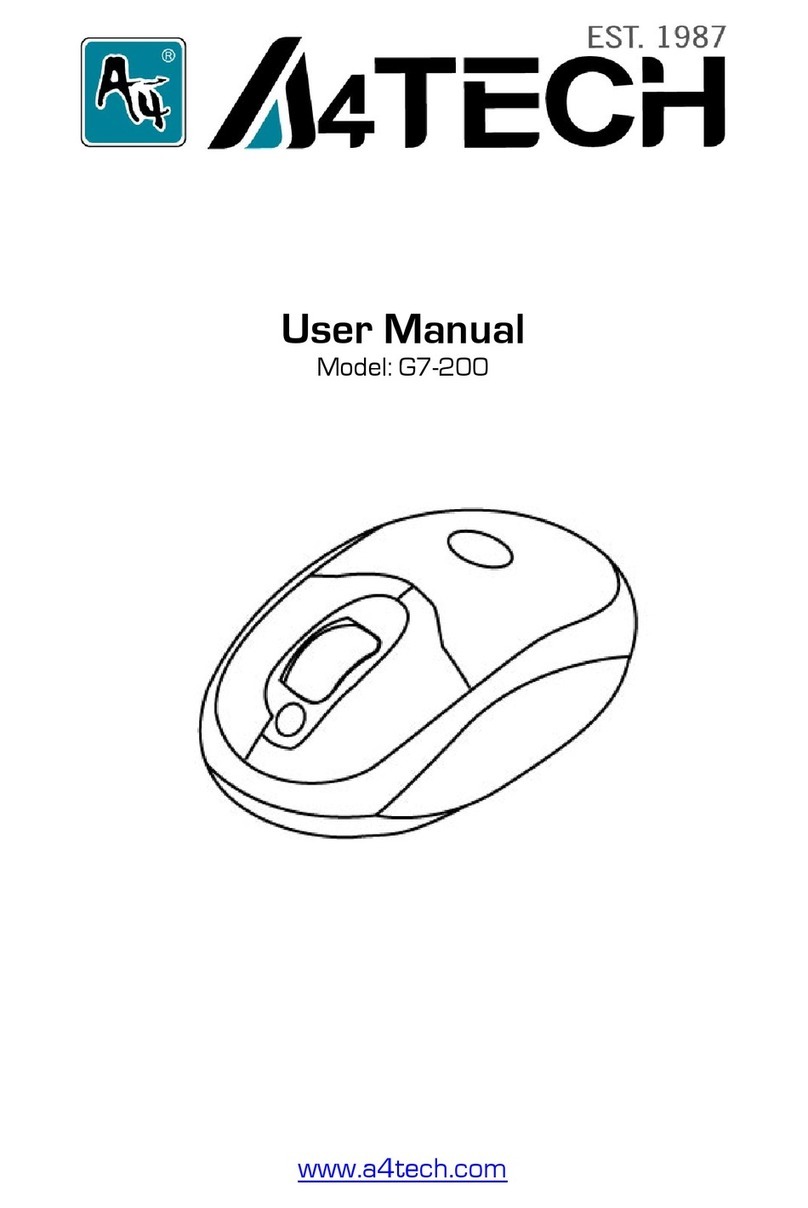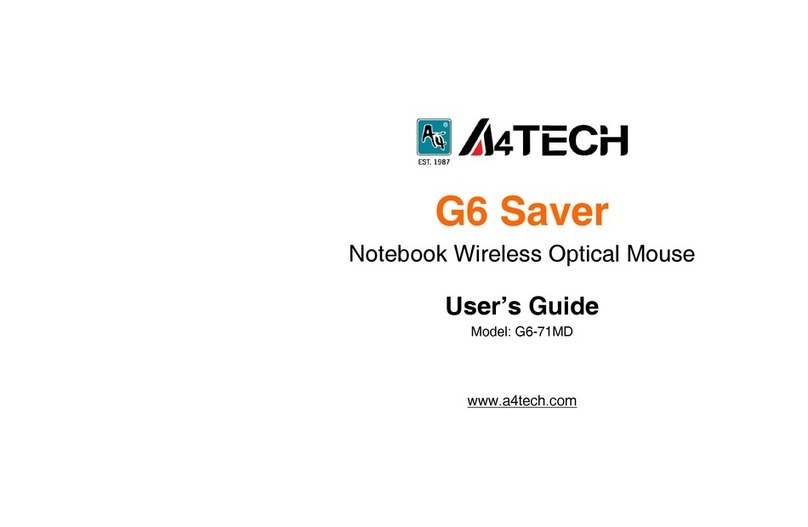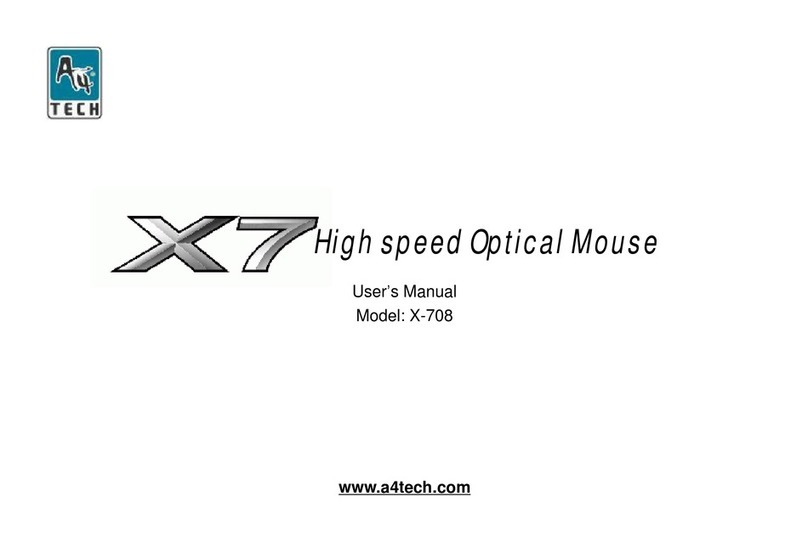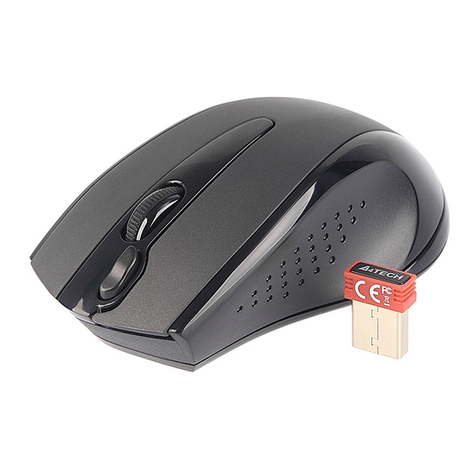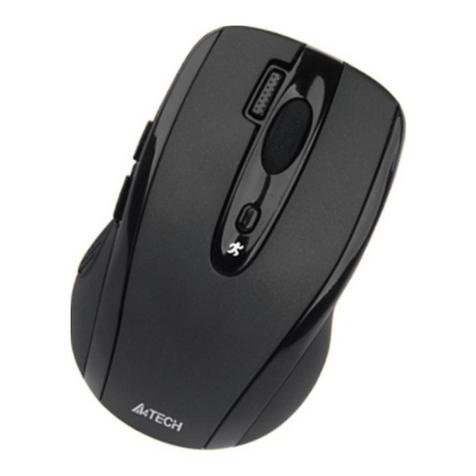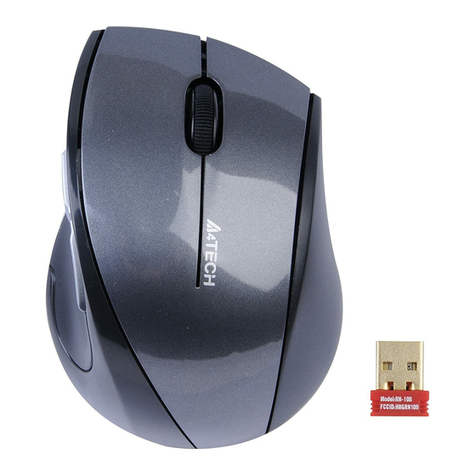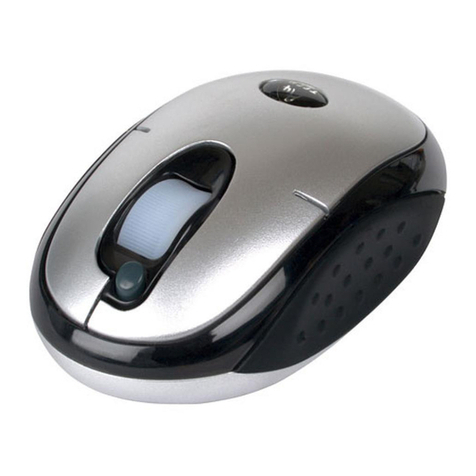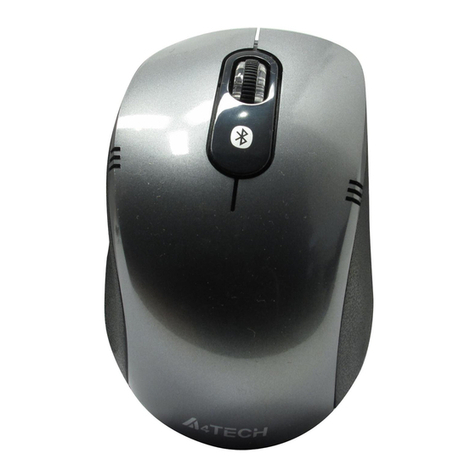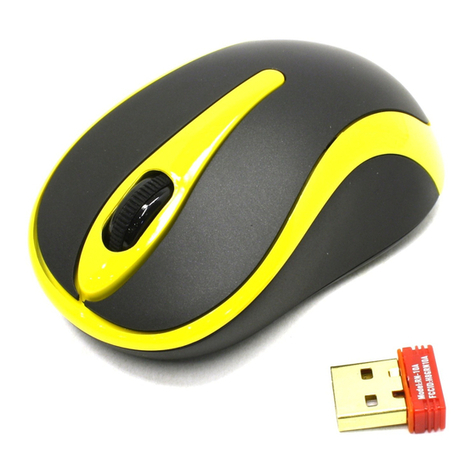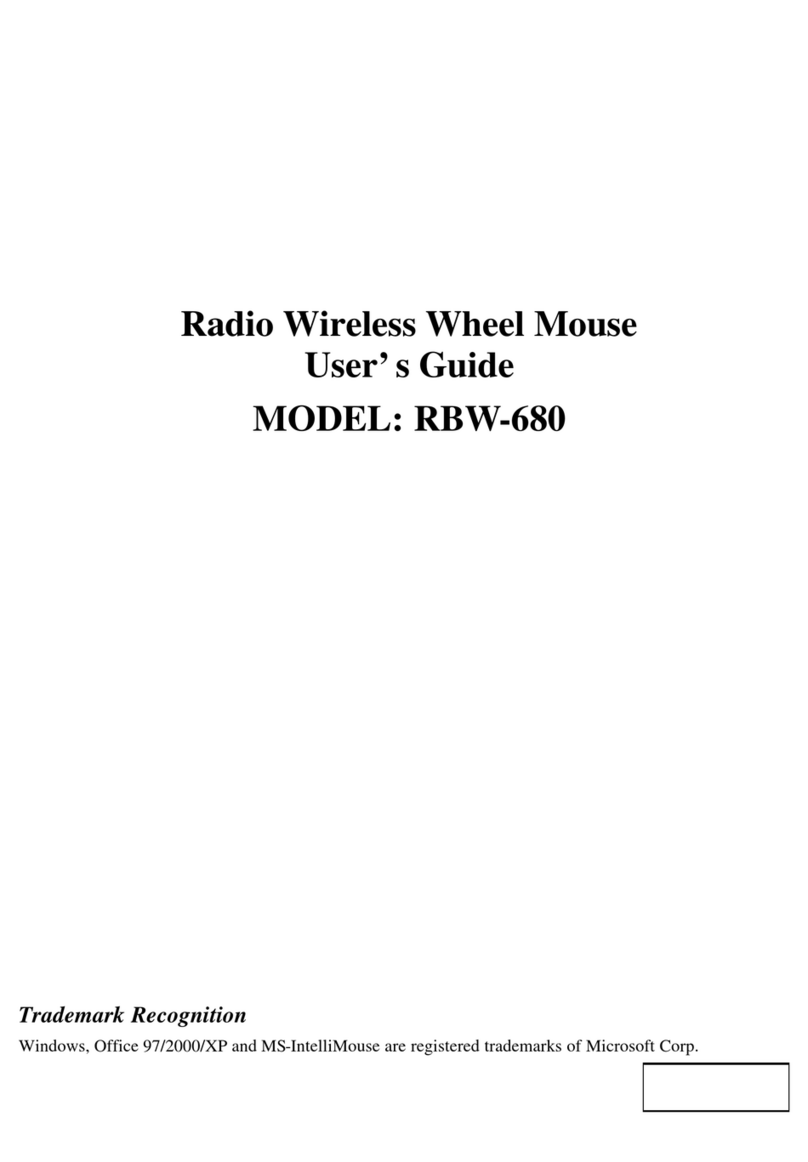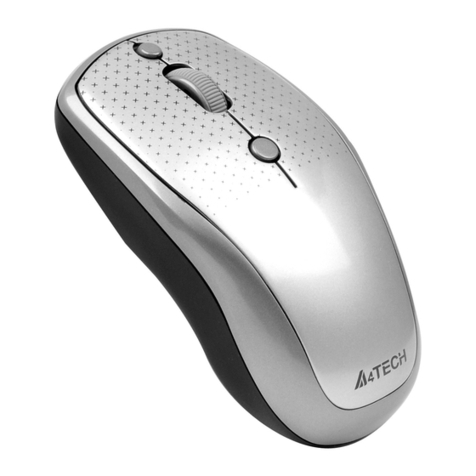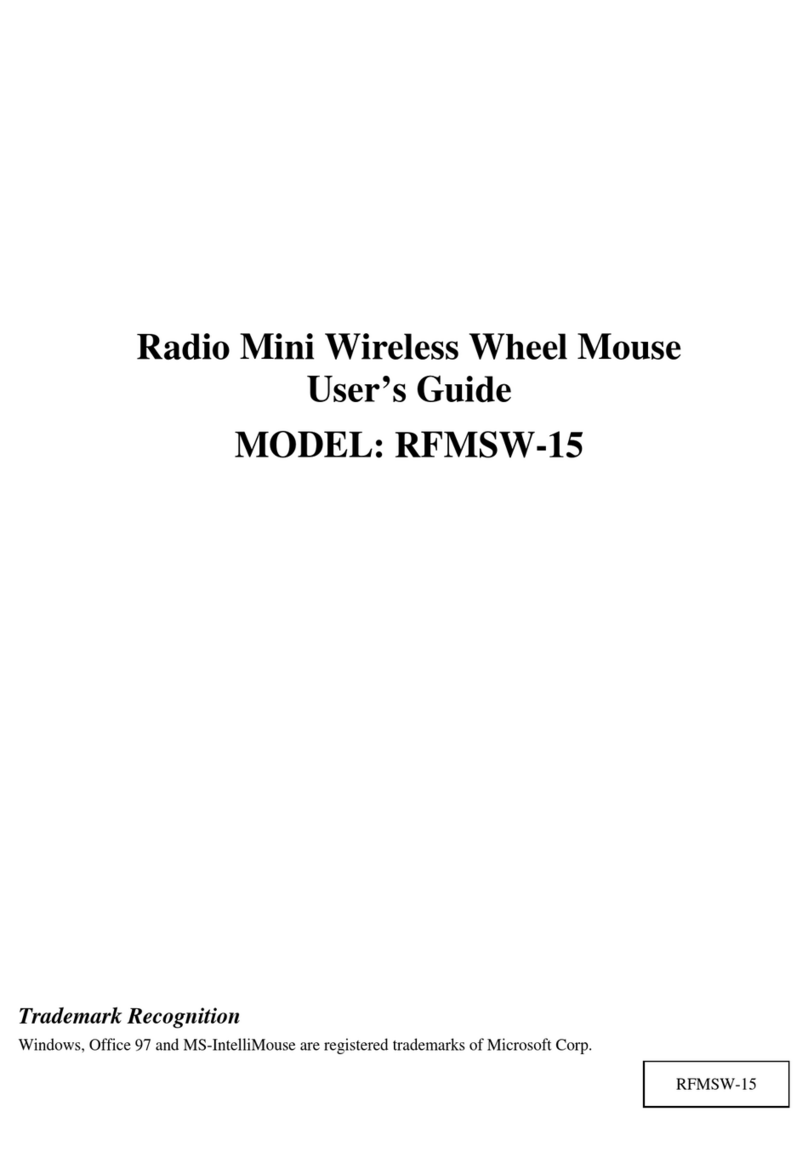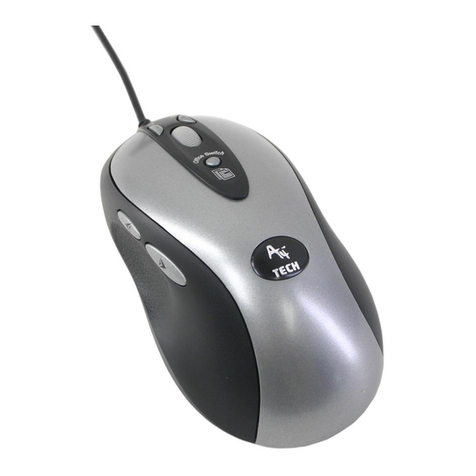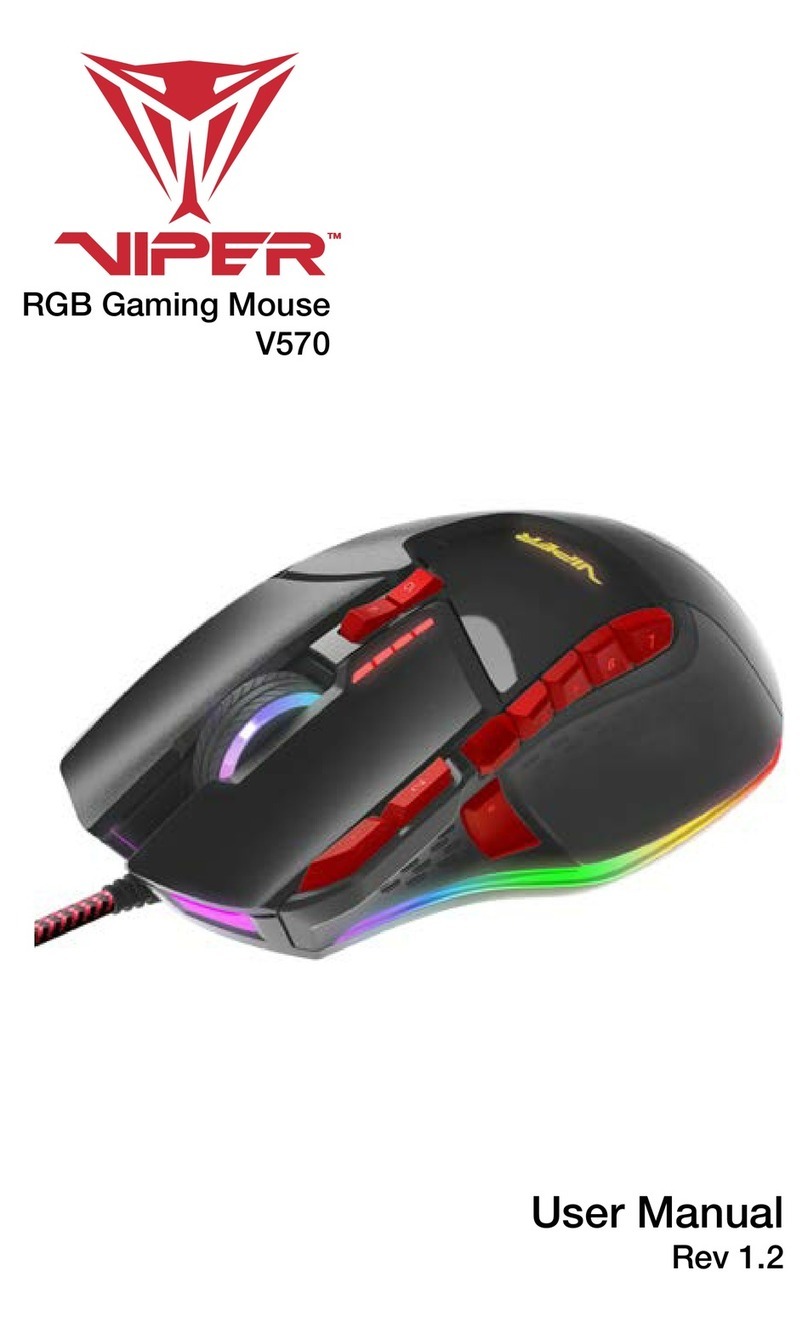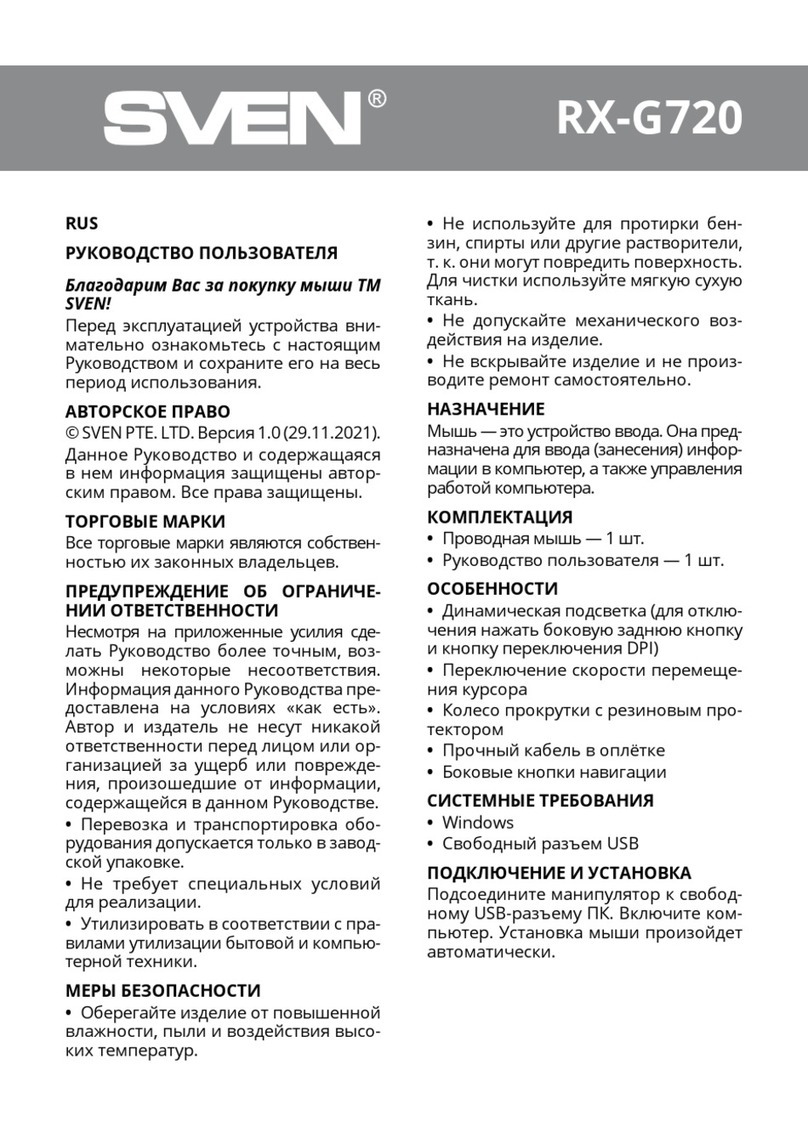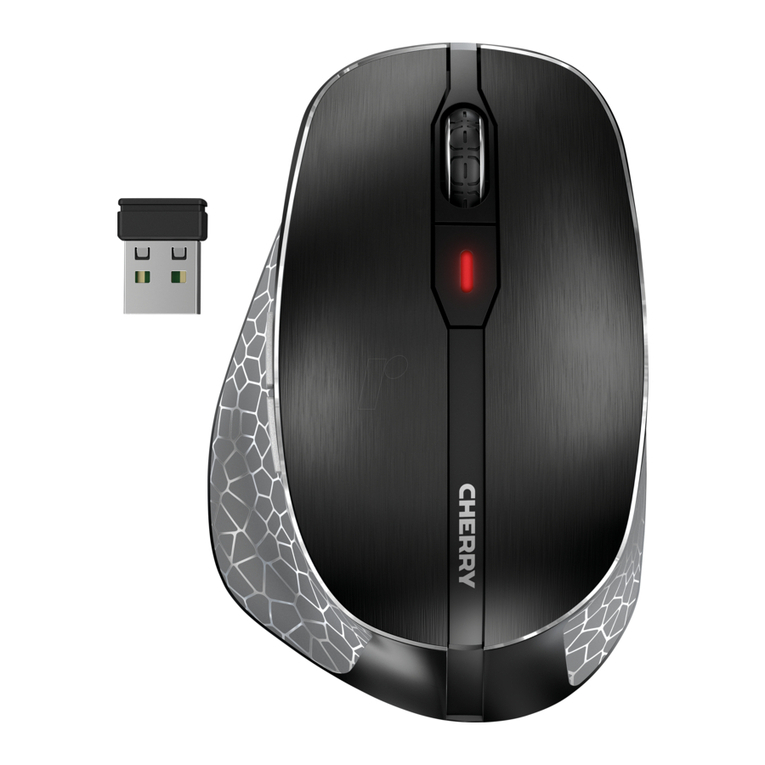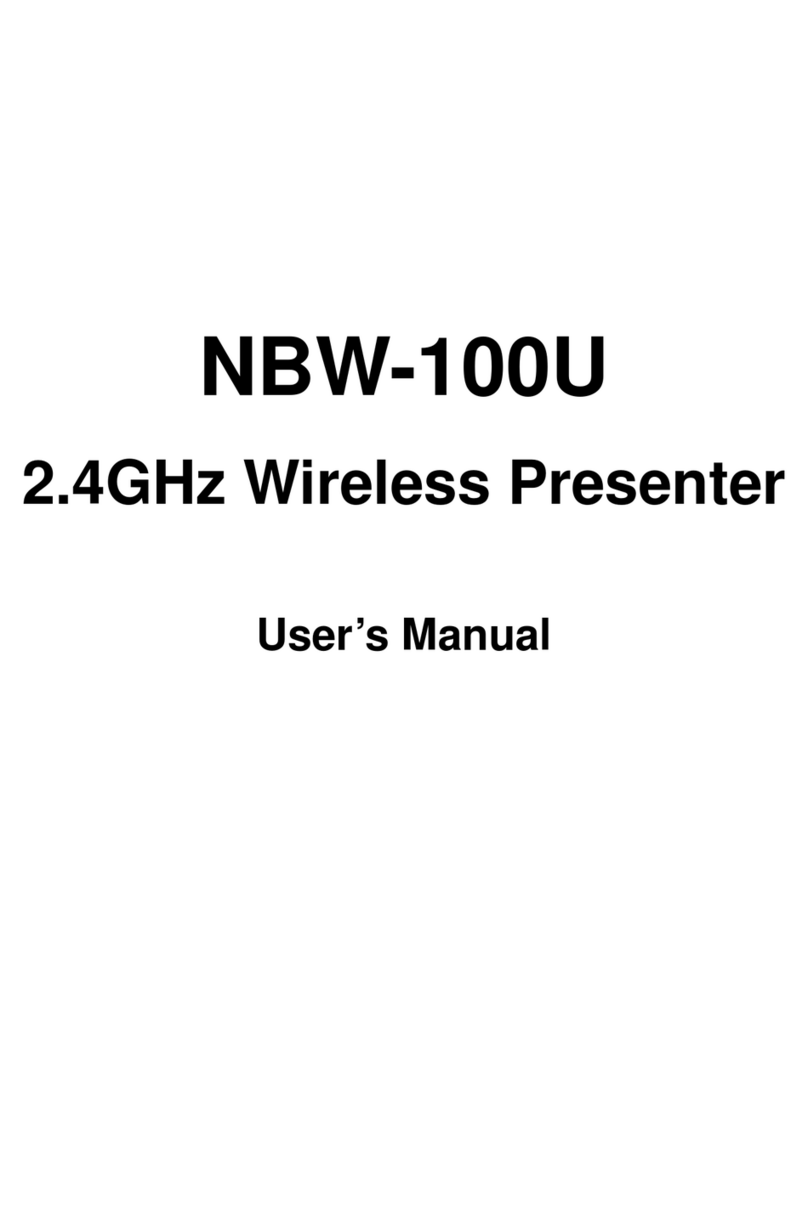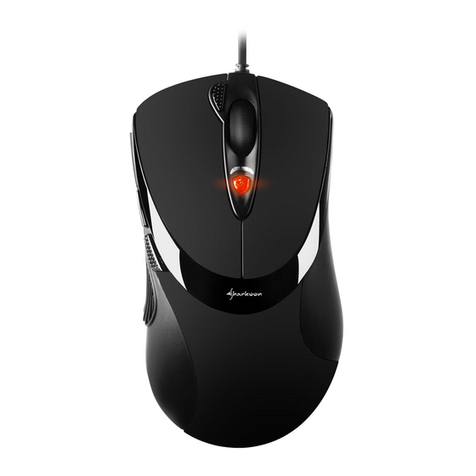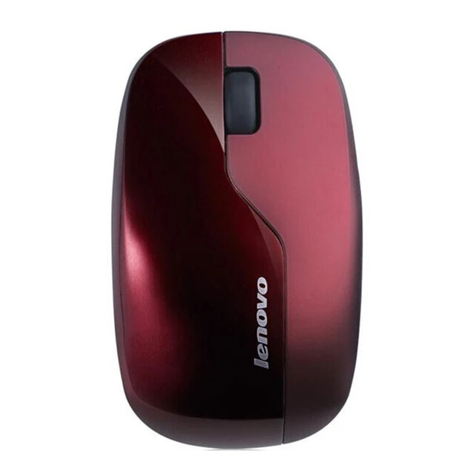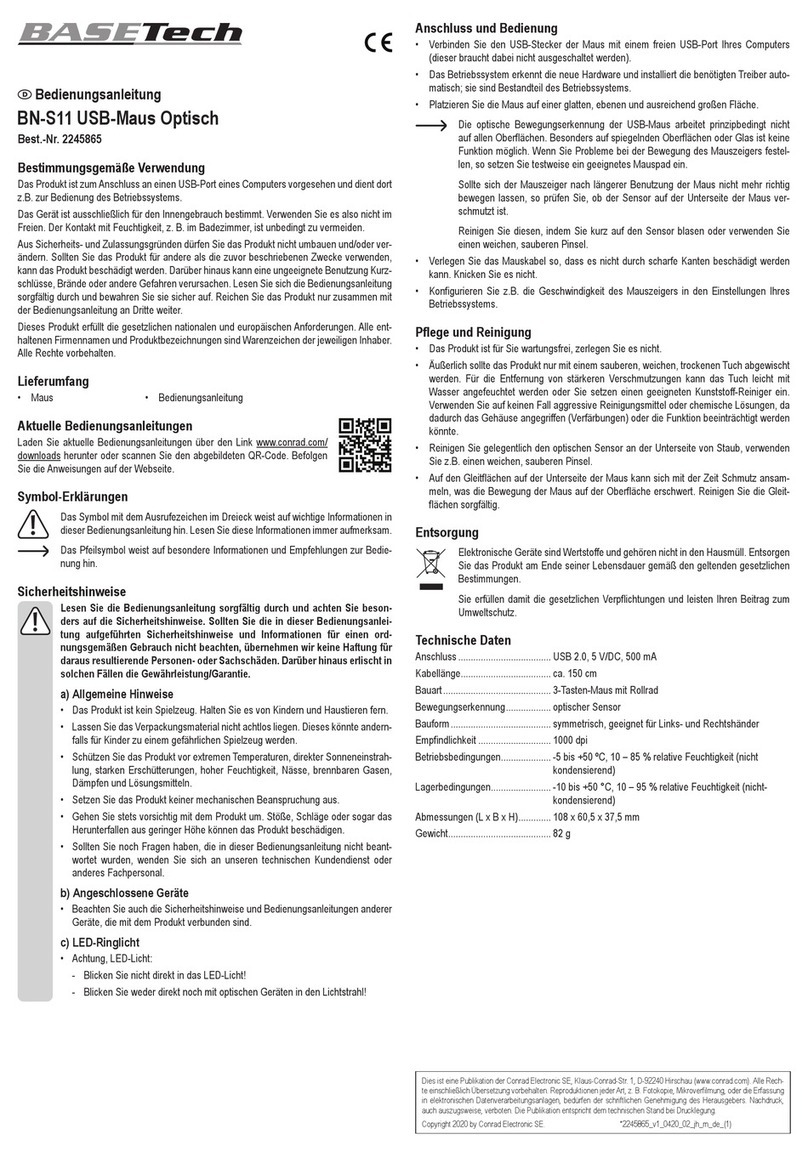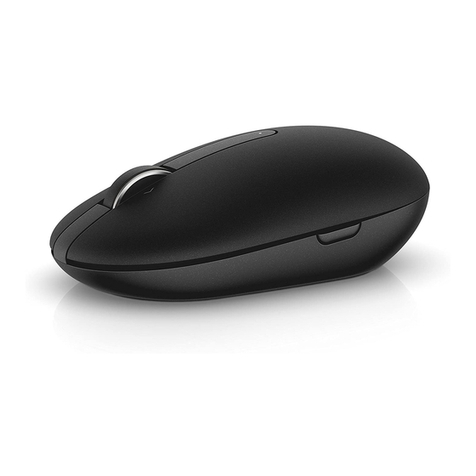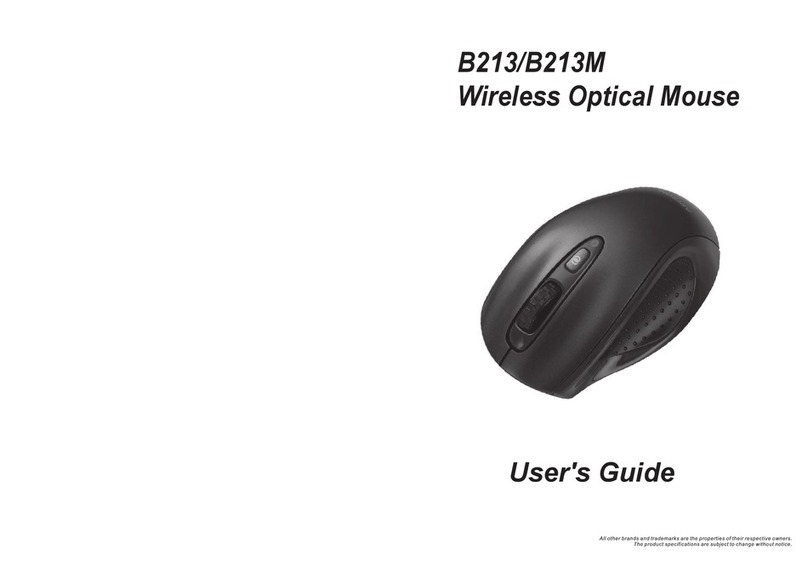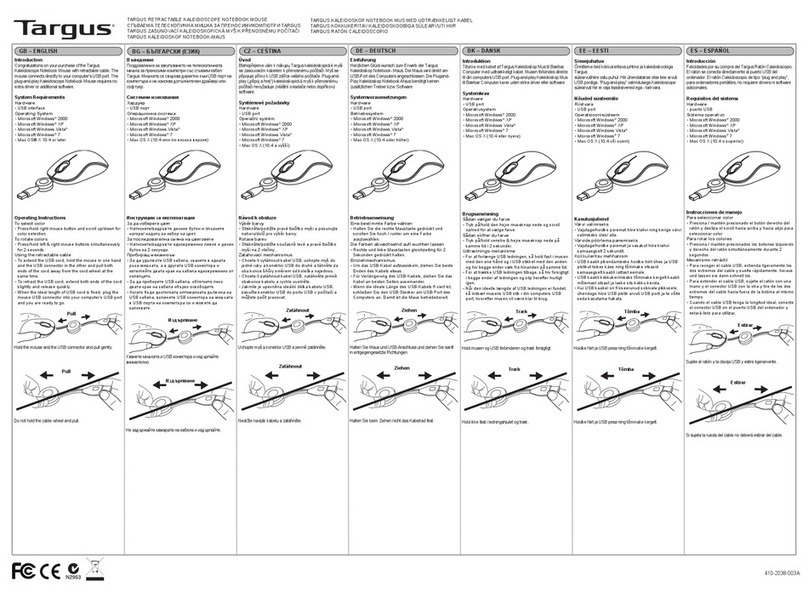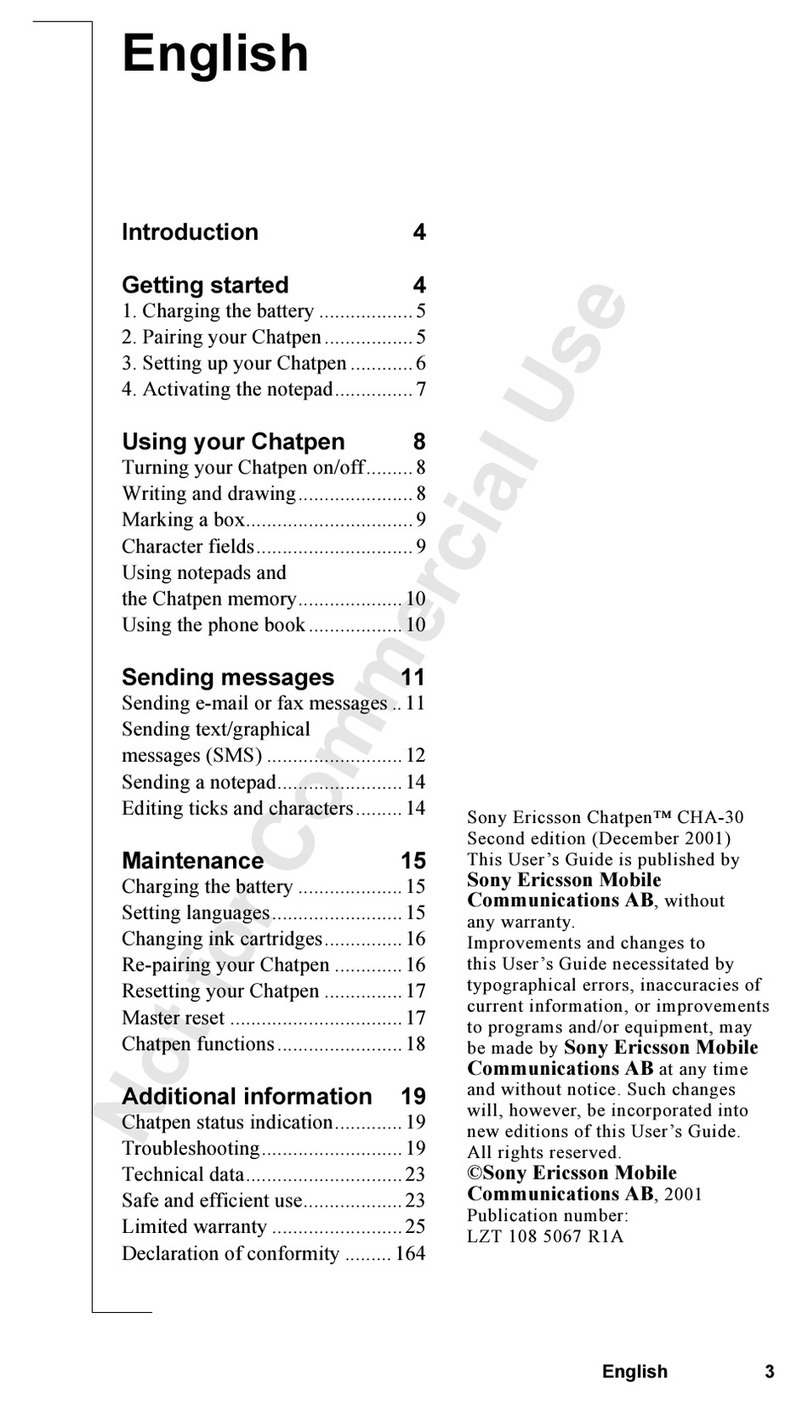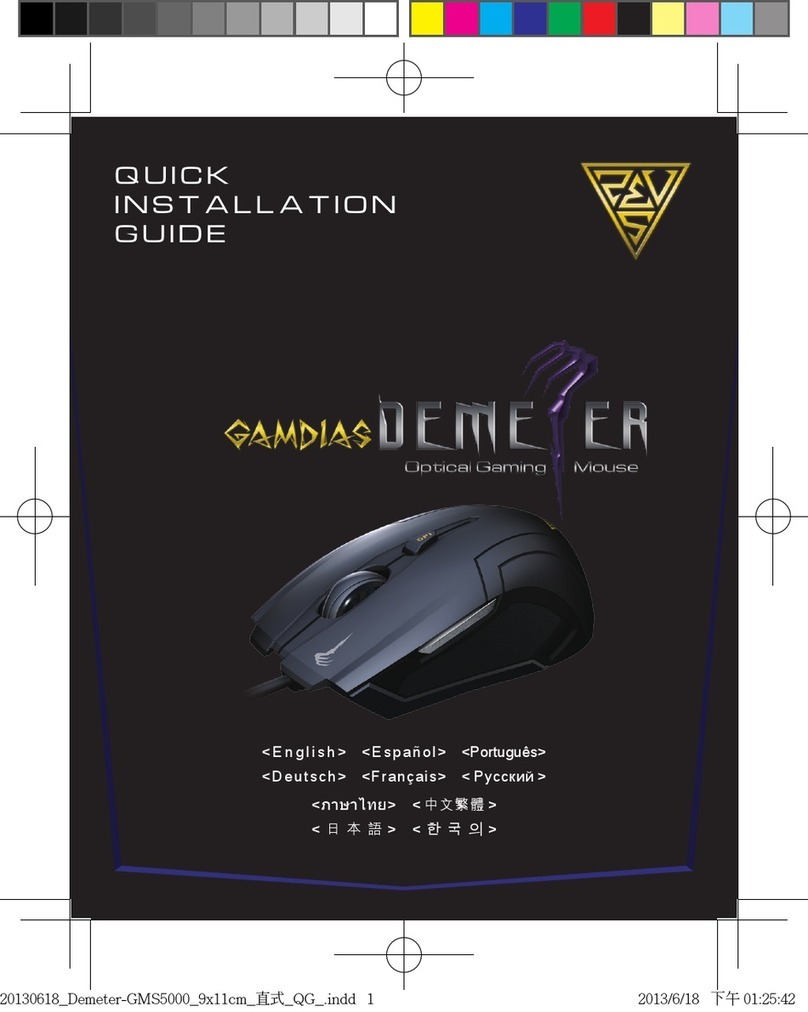
—5—
U
US
SI
IN
NG
G
T
TH
HE
E
M
MO
OU
US
S
E
With the iWheelWorks software, you have all the advantages of the Microsoft IntelliMouse wheel, and but you can also
scroll in Windows 95/98/2000/NT.
Your mouse has a wheel; the wheel functions as both a wheel and a button. Simply click the wheel as you would a
programmable standard Third button.S
SC
CR
RO
OL
LL
LI
IN
NG
G
A
AN
ND
D
Z
ZO
OO
OM
MI
IN
NG
G
W
WI
IT
TH
H
T
TH
HE
E
M
MO
OU
US
S
E
Task What is it? How to do it?
Wheel Scroll Use wheel Scroll for precise up
and down movement. To scroll up, move the wheel forward; to scroll down, move
the wheel back.
Zoom Use Zoom to either magnify or
demagnify the view of a
document in an application
that supports it.
Place the cursor in an application that is Microsoft Office
97/2000 compatible. Press and hold the Ctrl key on the
keyboard, then to zoom in, move the wheel forward; to zoom
out, move the wheel backwards.
AutoScroll UseAutoScroll in Windows
95/98/NT/2000 and Microsoft
Office97/2000 compatible
applications to scroll through
large documents.
AutoScroll allows you scroll a
document automatically
without having to move the
mouse continuously.
Assign AutoScroll to a button on the mouse if it is not already
assigned.
Place the cursor in an application, Press the mouse button
assigned to AutoScroll. The AutoScroll icon appears.
Move the mouse once in the direction you want to scroll. The
farther you move the pointer from the starting point, the faster
the scrolling.
To stop AutoScroll, press any mouse button.
M
MO
OU
US
SE
E
P
PR
RO
OP
PE
ER
RT
TI
IE
ES
S
S
SE
ET
TT
TI
IN
NG
G
S
From the Mouse Properties window you can customize many settings for your mouse
including button assignments, scroll wheels and cursor movement. To open the Mouse
Properties window double-click on the mouse icon in the system tray. The Mouse
Properties window has six tabs that are described below.
System Tray
Buttons Tab
Button Assignments: Click the down arrow to select the preferred function for each button. (See the
Settings Tab for more information.)
Double Click Speed: Increase the speed for executing a double-click.
Button Configuration: Configure your mouse for left- or right-hand use. The default setting for buttons 1
and 2 will be reversed.
Pointers Tab
The Pointers tab lets you change the way the cursor appears. Click the down arrow under Scheme and choose
the setting you want. The available pointers for each scheme are shown in the pane below. You can browse to
additional pointers, then create your own scheme using the Save As button.
Motion Tab



